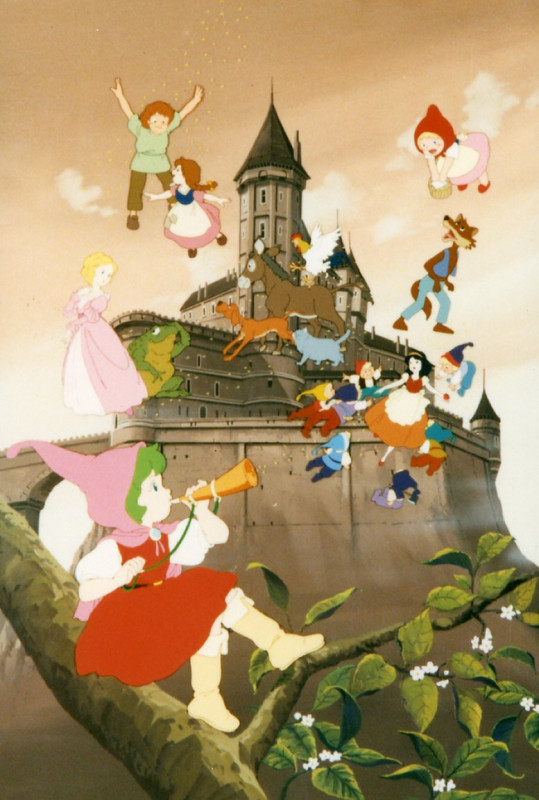
(This review covers both seasons, not just the first one)
Fairy tales have always been a staple in our lives, whether because our parents read them to us, we learned about them in school, or saw the Disney movie versions. Everyone’s probably heard of at least one fairy tale, like Snow White or The Little Mermaid. Even other countries have their own fairy tales, or their own original spins on familiar ones. But what many don’t know is that often, the original sources are a lot darker and less kid-friendly than the interpretations we were exposed to. Such is the case of the fairy tales by the Brothers’ Grimm, who are famous for having much darker and more cynical versions of popular fairy tales. Of course, in the eighties, Japan had the bright idea to adapt some of Grimms’ fairy tales into an anime series, titled Grimm Masterpiece Theater in Japanese, retitled Grimms’ Fairy Tale Classics in English. If you can believe it, this was one of the first anime that Saban Entertainment dubbed and brought to America back in their heyday. It even got aired on Nick Jr of all things. I was born in 1993, so I never saw it growing up, but I became friends with many people who did grow up with it. But because of Saban’s tendency to never put stuff they license out on home video, or in some cases not completely, many episodes of this series were considered lost media until just a few years ago. Thanks to Discotek Media not only finally re-releasing this series on Blu-Ray, but even released the Japanese version with English subs. Curious, I bought both sets and wanted to see what this was all about.
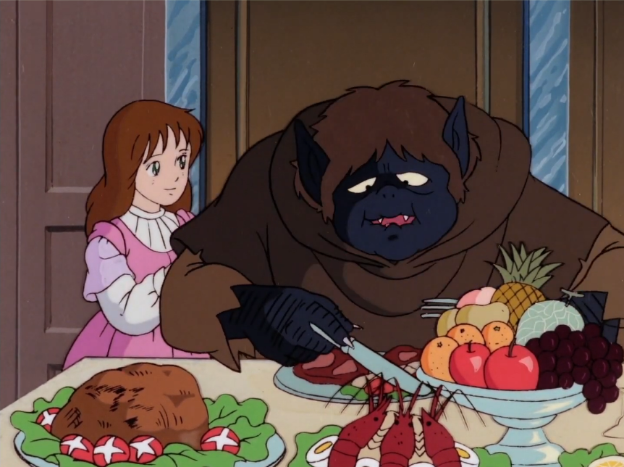
Now, Grimms’ Fairy Tale Classics isn’t your typical anime, following one set of characters in a singular narrative. Rather, each episode is a standalone retelling of different fairy tales, though there are some two-parters, and only one four-parter. You have common ones like Snow White, Cinderella, Little Red Riding Hood, Rapunzel, and Beauty and the Beast, but also some very obscure ones like The Coat of Many Colors, King Bluebeard, Godfather Death, The Water Nixie, and Brother and Sister. Basically, you can watch any episode of this anime and not feel like you skipped an episode, save for the two-parters and four-parter. Some things are changed from book to TV, such as leaving out certain characters for the sake of streamlining, while others are expanded upon, such as giving some characters names and well-defined personalities that they didn’t have in the original source. One thing I did notice though, upon watching both the censored English dub and uncensored Japanese version, is that the latter names some characters in some others but most of the others don’t have names, while the English dub goes out of its way to name every character possible whenever they’re able. For example: Cinderella’s pigeon friends have no names in Japanese, but in English they’re named Algernon and Gwendolyn. In King Bluebeard, the main female character is named Josephine in English but has no name in Japanese.
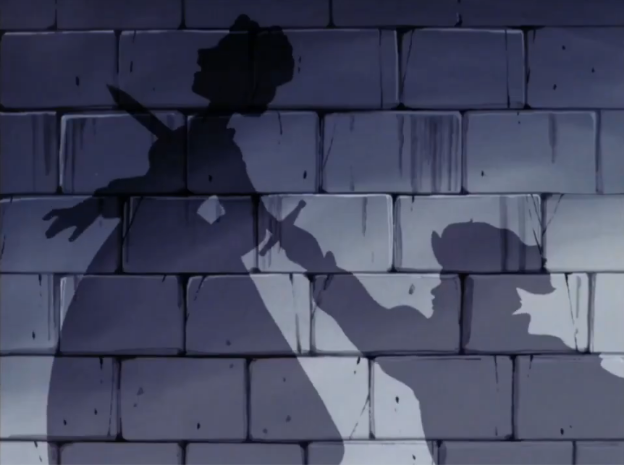
Do be warned, though: If you plan on showing Grimms’ Fairy Tale Classics to your kids, or plan on watching it yourself, don’t expect it to be a cutesy, rosy affair like the various Disney movies, because not only is this series more faithful to their original sources, this means that they are dark. Granted, Saban censored a lot of the darker parts in the English dub, and there are some episodes that are equally sugary or comedic, such as Little Red Riding Hood or The Marriage of Mr. Fox, but many of them are not only dark in their atmosphere, but their themes as well. In the Japanese version, at least, when characters get cut, blood appears without censorship. Many fairy tales depicted show death, cruelty, questionable ethics, moral conflicts, and murder as huge themes, and several of them have genuinely scary imagery, like monsters being melted alive in graphic detail, or characters being injured, abused, or even murdered. One episode, The Coat of Many Colors, shows the main character, Aleia, experiencing what is basically PTSD after her mentally insane father tries to force her to marry him before accidentally killing himself. One episode even shows a naked preteen boy, complete with an uncensored penis. Yes, really. Of course, Japan has always had less restrictive standards on what’s appropriate for kids shows compared to countries like America and Canada. But again, I always respect Japan’s kids cartoons for going against the grain. It’s what made me love anime in the first place, but some parts were a little much, such as, again, the brief instance of child nudity.
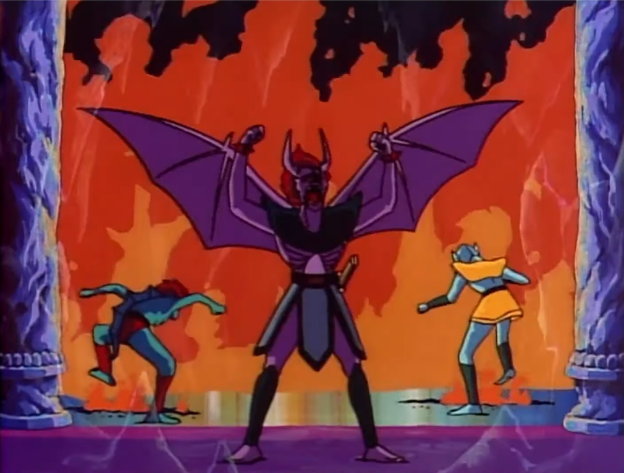
As far as the technical aspects go, Grimms’ Fairy Tale Classics is…okay. The animation tends to fluctuate at times, with some episodes being very well animated and others…not so much. In one episode, The Frog Prince, the titular frog is chased around the dining room by a dog, and one frame shows a woman’s hair flying wildly…and being frozen in place while the animals are chasing each other. I’m pretty sure hair, when blown upward, doesn’t just stay in place in mid-air. It doesn’t help that sometimes the character designs change in every episode, what with every episode being standalone retellings of different fairy tales. Some characters will look more realistic, while others are deliberately more cartoony with dot eyes and overexaggerated expressions. This isn’t necessarily a bad thing, as this makes each adaptation of each fairy tale stand out. But don’t expect everything to look completely the same in every episode. I also find the music to be rather mixed as well. I mean, overall the soundtrack is fine, but often times it uses a weird variety of modern instruments, like electric guitar and synthesizers, making the more medieval-focused fairy tales feel weirdly anachronistic. It also doesn’t always match the mood of a scene either. In one episode, Bearskin, weirdly comedic music plays right after a man’s suicide attempt is interrupted.
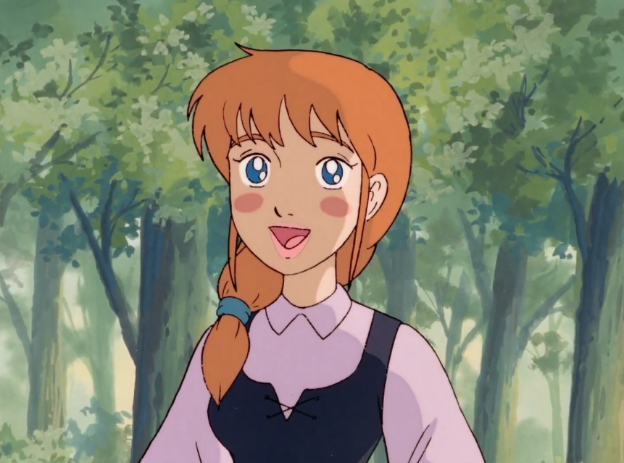
You’re not going to find much in the way of character development here as, again, every episode focuses on a different fairy tale, rather than one singular narrative with one set of characters. Honestly though, many of the adaptations go out of their way to expand on the original fairy tales, giving characters much more characterization than they did in their original sources. For example, in Snow White and Rose Red, the hunter, who is the bear’s brother, doesn’t do much in the original fairy tale other than get married to Rose Red, but here, he’s given an actual personality and time to get to know Rose Red before they marry at the end. This is especially prevalent in Snow White, which is the only fairy tale to be given four whole episodes rather than one or two, and because of this, I think it’s the best adaptation of Snow White. For one, the actual character of Snow White actually has a personality and is much more three-dimensional compared to, say, Disney’s Snow White. I also found the dwarves to be pretty likeable as well, even if the show couldn’t focus on all of them (Monday/Chick is my favorite out of them. He’s best dwarf!).
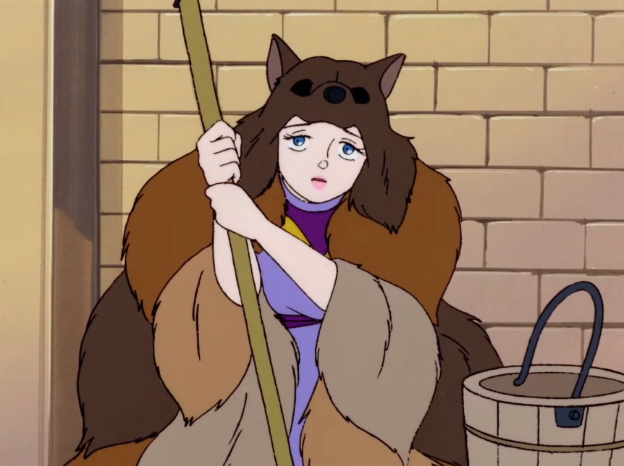
That being said, some decisions the creators made in giving certain characters certain types of personalities are rather suspect. For one, Leonora, the princess in The Frog Prince, is depicted as a whiny, spoiled brat who wants nothing to do with helping the prince-turned-frog, and when it seems like she almost kills him due to a temper tantrum, all she thinks about is what’ll happen to her…and she somehow marries the prince and lives happily ever after with him despite having done absolutely nothing to deserve it. Seriously, I wanted to punch her every time she opened her mouth. Similarly, I have no sympathy for Rapunzel’s biological parents because the whole thing started due to the mother throwing tantrums about wanting to eat magical cabbage like a petulant child, KNOWING those cabbages are cursed, and her husband is equally so for refusing to put his foot down, and then they both proceed to forget that their child was stolen and don’t even bother looking for her, ever. I also didn’t like The Naughty Spirit, not because of its dark content, which I liked, but because I found its overall tone to be needlessly mean-spirited and two of the main characters to be unlikeable asshats who were more concerned about their own safety and constantly blaming the drummer boy for circumstances that they basically brought on themselves.
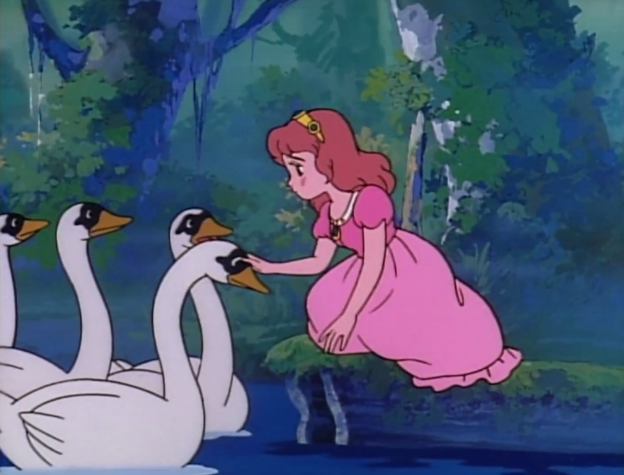
There were also times when I felt like the fairy tales being adapted could have benefitted from having an extra episode or two, like Snow White and Cinderella did. For example, I liked The Six Swans, but the amount of content it goes through, along with its rather brisk pacing, made it feel rather overstuffed, and it barely seemed to have time to breathe or flesh out its characters. This is mainly because the second season of the anime, called New Grimm Masterpiece Theater in Japanese, does away with two-parters and has every episode be a standalone. While this format does work for certain fairy tales, like Snow White and Rose Red and The Old Woman in the Woods, it does result in a lot of fairy tales that had more content feeling like they were just compressed and not being allowed time to really spread their wings. That being said, I don’t want to end this review on a negative note. For this one, I’m going to list my top 10 favorite Grimm’s Fairy Tale Classics episodes and my top 6 least favorite episodes.
Favorite Episodes:
- The Coat of Many Colors
- Snow White
- Snow White and Rose Red
- Hansel and Gretel
- King Bluebeard
- Beauty and the Beast
- The Old Woman In The Woods
- King Grizzlebeard
- Red Riding Hood
- Jorinde and Joringel
Least Favorite Episodes:
- The Frog Prince
- The Naughty Spirit
- Rapunzel
- Brother and Sister
- The Golden Goose
- Iron Hans
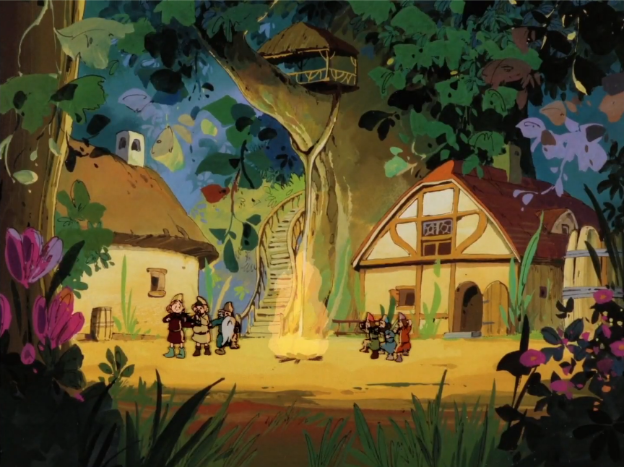
I don’t have as much of an attachment to this anime as others who grew up with it did, but after watching the series, I can totally see why people fell in love with it back when it first aired on Nick Jr back in the eighties. Grimm’s Fairy Tale Classics doesn’t try to dumb down the visions that the Brothers’ Grimm had for their stories, or interpretations of other fairy tales (Saban’s English dub did, though that was more due to strict broadcast regulations in the US back in the day), and often times expands on them when it has the chance. Definitely check it out if you’re interested in an old treasure. Now that Discotek Media released the series on Blu-Ray for the first time ever, it’s now widely available after being lost to time! If you want to keep this series alive, buy the Blu-Ray (If you live in North America, that is, as the BRs are Region A only), and while you’re at it, check out the special feature video on the second season’s BR, as one of the producers at Discotek Media talks in detail about how they found the English masters for the series, which had pretty awful video quality, and painstakingly replicated Saban’s edits to fit the English dub in order to present said dub in better video quality. One thing I found absolutely hilarious in that special feature is that when said producer talks about The Naughty Spirit, he explicitly uses the term isekai to describe the soldiers being whisked into Hell…which really makes me laugh in the best way possible. But yeah, Grimm’s Fairy Tale Classics isn’t perfect, but after being gone for so long, I think this series deserves to be seen and talked about again.

Man, the news that Discotek is going to stop printing blu-rays for this after 2024 managed to date this review already.